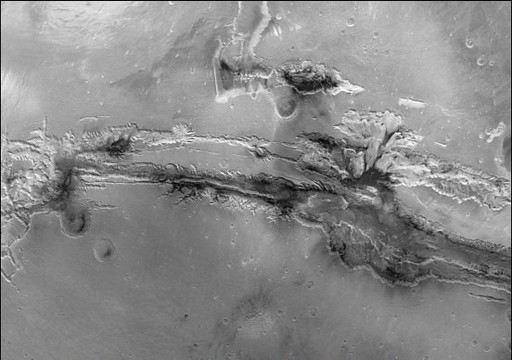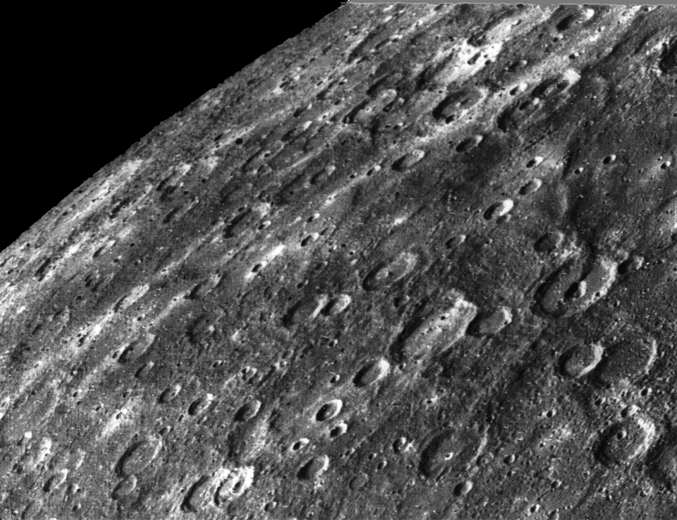Planetary Run: Mariner Program
- Aeryn Avilla
- Nov 13, 2021
- 8 min read
Updated: Mar 11, 2025
NASA's Mariner program lasted from 1962 to 1973 and sent seven probes to the inner planets. It was a joint project between NASA and the Jet Propulsion Laboratory (JPL) in Pasadena, California. The probes were the first planetary orbiters and performed the first planetary flyby and the first gravity assist maneuver. Mariner was also the predecessor to the Voyager program, Viking program, and Cassini-Huygens probe.

There were ten Mariner vehicles set to launch over the course of twelve years. Seven were successful while the other three were lost due to launch vehicle failures. Each launched on an Atlas booster with either an Agena or Centaur upper-stage: Atlas-Agena rockets launched from Cape Canaveral's Launch Complex-12 while Atlas-Centaur rockets launched from Launch Complex-36B [1]. All spacecraft were developed by JPL and had either a hexagonal or octagonal bus which served as the body of the satellite. The bus housed all electronics and is to where all components (solar panels, antennae, etc.) were attached. Mariner was based on the Ranger lunar probes, which were operational around the same time. The total cost of the Mariner program was $554 million without inflation.
Mariners 1 & 2

The first two Mariner spacecraft were destined for Venus. The Soviet Venera 1 probe, also intended to visit Venus, launched on February 12, 1961 but lost contact with the ground before flyby occurred. Mariner 1 launched on July 22, 1962 but was lost when the Air Force Range Safety Officer destroyed the malfunctioning Atlas rocket, which had gone off course. The communication error between the rocket and the ground was traced back to the omission of a hyphen-shaped symbol from one of the guidance program characters. Renowned science fiction author Arthur C. Clarke called this incident "the most expensive hyphen in history".
Mariner 2 launched on August 27 of the same year and was the identical sister vehicle to Mariner 1. On its way, it experienced a problem with attitude control and one of its solar panels. It successfully travelled to Venus and was the world's first interplanetary spacecraft, taking the very first measurements of solar wind on the way there. It performed its first flyby on December 14, 21,644 miles (34,833 km) above the planet's surface. The probe measured the temperatures of the surface and the clouds above, as well as particles near the planet in interplanetary space. Mariner 2 discovered Venus lacks a strong magnetic field, and therefore radiation belts. The probe itself was not outfitted with a camera because mission planners knew the planet's thick atmosphere would block its surface from view. Contact was lost with the spacecraft on January 3, 1963 and currently occupies a heliocentric orbit.
Mariners 3 & 4
The next two Mariner probes were Mars flyby missions. Mariner 3 launched on November 5, 1964 but was lost when the Atlas-Agena D's nose fairing protecting the probe failed to jettison during ascent. Still reaching space, it is now predicted to be in orbit around the sun.
Its sister ship Mariner 4 launched to Mars three weeks later on November 28. After cruising for 228 days, the probe took the first up-close pictures of Mars and passed the planet at a distance of 6,118 miles (9,846 km) on July 14, 1965, successfully performing the first flyby. It was also the first Mariner spacecraft with a camera and digital tape recorder. During this time, it took 22 pictures covering about 1% of the red planet's surface. This was the first time the barren and inhospitable rust-colored desert was seen by man. A "real-time data translator" machine converted the digital images taken by the spacecraft into numbers printed on strips of paper. Too anxious to wait for the pictures to be processed, employees at JPL took the strips of paper and attached them side-by-side to a display panel. They then proceeded to hand-color every segment of the picture: Each number represented a different color, similar to a paint-by-numbers picture. After revealing the projected colors of the Martian surface, they framed their masterpiece and presented it to JPL director William H. Pickering.

After it passed Mars, Mariner 4, which was originally given a lifespan of eight months, orbited the sun for another three years before losing contact with the ground on December 20, 1967. During these three years, the probe studied solar wind. Communications were finally lost as a result of micrometeorite orbital debris bombardment. Like its sister ship, Mariner 4 is now in heliocentric orbit.
Mariner 5

Mariner 5 was the second American probe to visit Earth's sister planet Venus. It launched on June 14, 1967 and passed by Venus on October 19 at an altitude of 2,479 miles (3,990 km). With more instruments than its predecessor Mariner 2, Mariner 5 sampled solar particles above the planet, penetrated its atmosphere with radio waves, and analyzed the planet's brightness in ultraviolet light. It was also the first Mariner probe to include an ultraviolet photometer but was the last to not include a camera. Contact was lost on December 4, 1967 and the spacecraft is now orbiting the sun.
Mariners 6 & 7
The twin Mariner 6 and 7 spacecraft flew over the equator and southern hemisphere of Mars. Mariner 6 launched on February 24, 1969 with Mariner 7 taking off on March 27. They were the first of the Mariner probes to be launched atop Atlas-Centaur rockets as opposed to Atlas-Agenas. Mariner 6 arrived at Mars on July 31 with Mariner 7 following shortly behind, encountering the red planet on August 4. In total, both spacecraft returned 143 photos of the planet during approach and another 55 of the surface, including the polar caps and one of its moons, Phobos. These pictures did not show the presence of long-desired canals first hypothesized by Percival Lowell at the turn of the 20th century, but rather the dark features once believed to be evidence of an extraterrestrial civilization. They just so happened to miss the giant volcanoes in the north (likely because neither ventured to the northern hemisphere) and the vast canyon system that runs along the equator now known as Valles Marineris, which was discovered later. Both vehicles also studied the chemical composition of the Martian atmosphere. The closest approach to Mars either probe made was approximately 2,206 miles (3,550 km). The cost of both missions was a combined $148 million and both probes now orbit the sun.

Mariners 8 & 9
Mariners 8 and 9 were the fourth and fifth Martian probes of the Mariner program. The mission originally consisted of two spacecraft mapping the surface of Mars simultaneously but Mariner 8, which launched on May 8, 1971, was lost due to a 2nd stage failure during ascent. Its sister Mariner 9 launched on May 30 and became the first spacecraft to orbit another planet on November 13. Its launch mass was nearly double that of previous Mariner spacecraft due to extra onboard propellant needed to insert the probe into Mars orbit. At the time of its arrival, the surface of Mars was almost entirely obstructed by dust storms. Therefore, it had to delay analyzing the surface and atmosphere with its infrared and ultraviolet instruments. Mariner 9 returned 7,329 television images of Mars and photo-mapped 85% of the planet's surface, exceeding all primary photographic requirements. It also took the first up-close pictures of Mars's moons, Deimos and Phobos, as well as the enormous extinct volcano Olympus Mons and the Valles Marineris. As a matter of fact, the canyon system is named after Mariner 9. After completing its mission, the probe was shut off. It is still in orbit around Mars and was estimated to remain there until at least 2022, when it was projected to descend into the planet's atmosphere and either burn up or crash into its surface [2]. The Martian Viking 1 and Viking 2 spacecraft were larger versions of Mariner 9.
Olympus Mons (NASA) Valles Marineris (NASA)
Mariner 10
Mariner 10 was the final mission of the Mariner program and launched on November 3, 1973 from Cape Canaveral's Launch Complex-36B. Its goal was to fly by both Venus and Mercury, which it carried out successfully, becoming the first spacecraft to visit two planets and the first to use a gravity assist maneuver. Unlike the other missions following Mariner 2, Mariner 10 had only two solar panels rather than four. The Venus flyby occurred on February 5, 1974 at an altitude of 3,584 miles (5768 km). The probe used Venus's gravitational influence to fling itself onto a different trajectory for Mercury. A total of three Mercury flybys were performed on March 29, September 21, and finally March 16, 1975. Another spacecraft would not photograph Mercury close-up for thirty-three years [3]. Like every successful Mariner probe with the exception of Mariner 9, Mariner 10 is now slowly orbiting the sun. The Mariner 10 backup spacecraft is on display at the National Air & Space Museum's "Time and Navigation" exhibit in Washington, DC.
Surface of Mercury taken by Mariner 10 (NASA) Mariner 10 backup (Smithsonian)
After the cancellation of the Grand Tour Program in the early 1970s, the Mariner Jupiter-Saturn project was approved with the intention of sending two new Mariner spacecraft, Mariners 11 and 12, to the outer planets [4]. Developed by JPL, the first probe would visit Jupiter and Saturn before performing a flyby of Saturn's moon Titan. The other probe would arrive to Jupiter and Saturn afterwards and if the first probe was successful, continue on to Uranus and Neptune. The program's name was changed to Voyager in 1977 since the probe designs were significantly different from that of the original Mariner spacecraft. Voyager 1 launched on September 5, 1977 while its twin Voyager 2 launched on August 20. Both probes have since left the solar system. Visit this link to track both spacecraft in real time.
Mariner Mark II was a planned follow-on to the Mariner program but was cancelled in the early 1990s due to budget constraints. Its first mission was called the Saturn Orbiter/Titan Probe, which evolved into the Cassini-Huygens mission that crashed into Saturn's surface in 2017 at the end of its 20-year-long flight. The ESA-led Comet Nucleus Sample Return later became Rosetta (excluding the sample return) while the Pluto Fast Flyby developed into New Horizons. The Magellan spacecraft that visited Venus and the Galileo spacecraft that visited Jupiter were also based on the Mariner probes.
The Mariner program of the 1960s and '70s sent seven spacecraft to the inner planets of Mars, Venus, and Mercury. These spacecraft were the first in history to visit other planets and photograph their surfaces in extraordinary detail. The unprecedented success of the program led to numerous other interplanetary programs spanning the last 40 years, some of which are still actively exploring the outskirts of our solar system and beyond.

Author's note: Thanks for reading and be sure to like, comment, and share this post!
[1] At the time, it was called Cape Kennedy Air Force Station
[2] Orbit around Mars is called areocentric orbit. The prefix "areo" refers the Greek god Ares.
[3] I believe this next spacecraft was NASA's MESSENGER which launched in 2004 but did not enter orbit around Mercury until 2011.
[4] The Grand Tour program was the predecessor to the Voyager program and would have sent two spacecraft to the four outer planets and Pluto (Pluto was still a planet at the time)
Bibliography
“First TV Image of Mars.” NASA, NASA, 19 July 2018, https://www.nasa.gov/multimedia/imagegallery/image_feature_1982.html.
“Mariner Program.” NASA, NASA, https://space.jpl.nasa.gov/msl/Programs/mariner.html.
“Mariner.” NASA, NASA, 3 Aug. 2017, https://www.nasa.gov/mission_pages/mariner.
"Planetary Run" by Joe Montgomery, 1957









